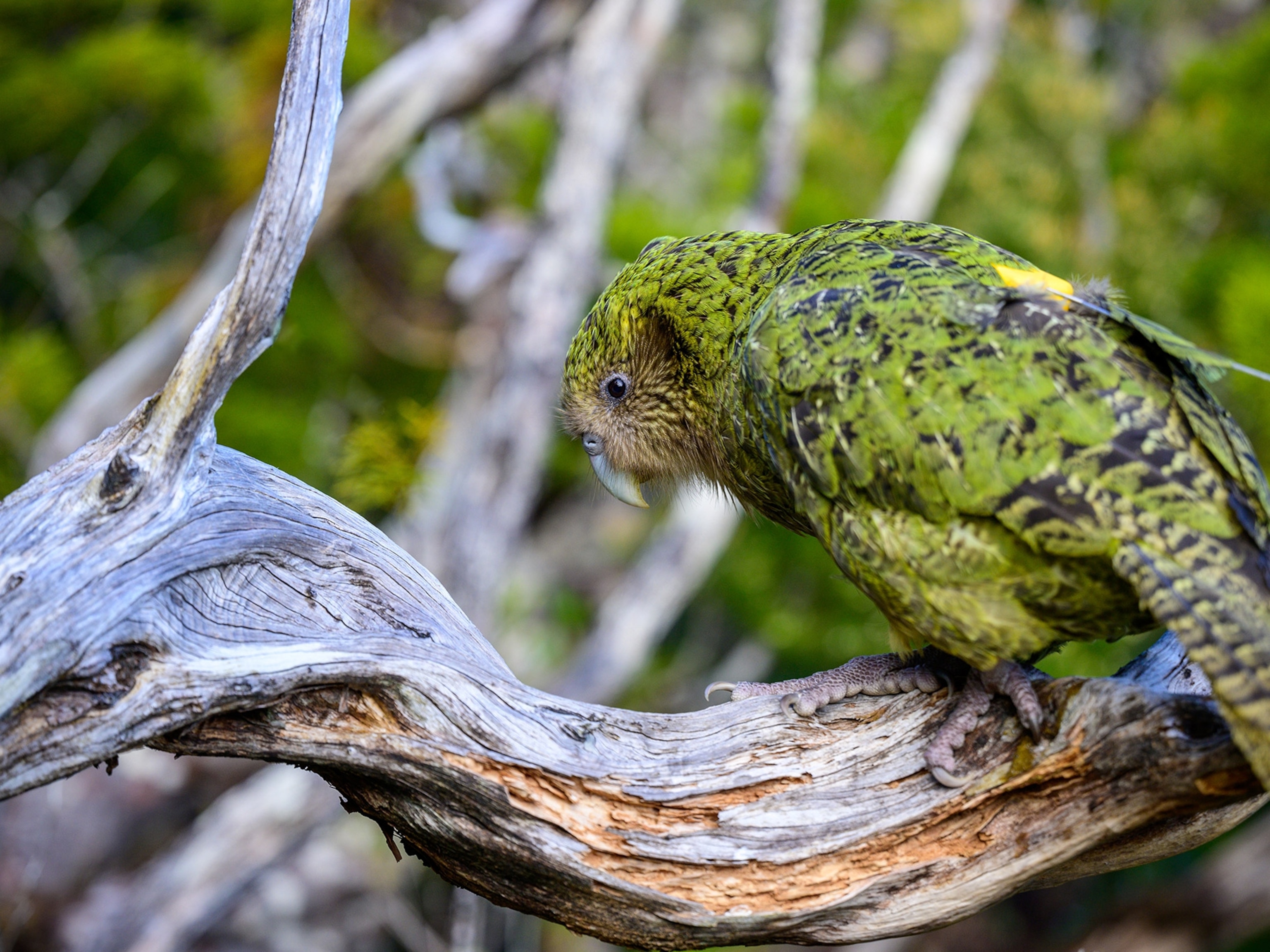
Where have all the insects gone?
Bugs aren’t just occasional nuisances, they’re crucial to the environment. Now populations of species worldwide are falling at alarming rates.
The butterflies just kept coming—at first thousands, then tens or even hundreds of thousands. Their wings were brown on the underside and vivid orange above, so as they flew by, they looked like chips of sunshine. The sight was marvelous, awe-inspiring, and more than a little disconcerting.
I encountered the butterfly cloud—technically, an irruption of California tortoiseshells —on a bright blue summer day in the Sierra Nevada. Along with Matt Forister, a biologist from the University of Nevada, Reno, I was hiking Castle Peak, a knob-shaped mountain northwest of Lake Tahoe. Castle Peak’s butterflies are one of the world’s most closely watched insect populations: Every summer for nearly 45 years they’ve been censused on a biweekly basis. Most of the data were collected by Forister’s mentor, Art Shapiro, a passionate lepidopterist and professor at the University of California, Davis, who recorded the information on three-by-five cards.
After Forister and his team computerized the surveys and analyzed them, they found that Castle Peak’s butterflies have been in decline since 2011. We were discussing why this was the case when we neared the 9,100-foot summit and were enveloped in an orange haze.

“The idea that insects are suffering seems shocking to people, which I understand,” Forister said. He gestured at the butterflies streaming by: “Insects do this, so it does seem weird.”
It’s said that we live in the Anthropocene—an epoch defined by human impacts on the planet. Still, by many measures, it’s bugs that dominate the world. At any given moment, it’s been estimated, there are 10 quintillion insects flying, crawling, hovering, marching, burrowing, and swimming around. In terms of variety, the numbers are equally impressive: Something like 80 percent of all the different kinds of animals are insects. They maintain the world as we know it: Without insects to pollinate them, most flowering plants, from daisies to dogwoods, would die out.
If humans were to suddenly disappear, biologist Edward O. Wilson has famously observed, the Earth would “regenerate back to the rich state of equilibrium that existed 10,000 years ago.” But “if insects were to vanish, the environment would collapse into chaos.”
It is, therefore, shocking—and alarming—that in most places scientists have looked recently, they’ve found that insect numbers are falling. This is the case in agricultural areas and in wild places like Castle Peak. Quite probably, it’s also happening in your own backyard.

The Entomological Society of Krefeld, Germany, on the Rhine River not far from the Dutch border, stores its collections in a former schoolhouse. Where kids used to fidget through class, the rooms now hold boxes filled with bottles, and the bottles, in turn, are filled with clumps of dead insects floating in ethanol. If there were a ground zero for the exploding concern about insect decline, the schoolhouse would be it.
“We don’t count the bottles, because the number changes every week,” Martin Sorg, the head curator of the collection, told me. He estimates that there are “several tens of thousands.”
In the late 1980s Sorg and his colleagues set out to find how insects were faring in different types of protected areas in Germany. To get a handle on this, they set up what are known as malaise traps, which look like tilted pup tents. The traps caught everything that flew into them, including flies, wasps, moths, bees, butterflies, and lacewings. Whatever a trap caught ended up in a bottle.
The collecting went on for more than 20 years, first in one spot, then another, in 63 protected areas, mostly in the state of North Rhine-Westphalia, where Krefeld is located. In 2013 the entomologists returned to two sites that they’d first sampled back in 1989. The mass of trapped insects was just a fraction of what it had been 24 years earlier. They sampled those sites again in 2014 and set about resampling more than a dozen other sites. Wherever they collected, the results were similar.
To interpret the results, the society enlisted the help of other entomologists and statisticians, who painstakingly sifted through the data. Their analysis confirmed that from 1989 to 2016, flying insect biomass in protected areas in Germany had declined by a whopping 76 percent.
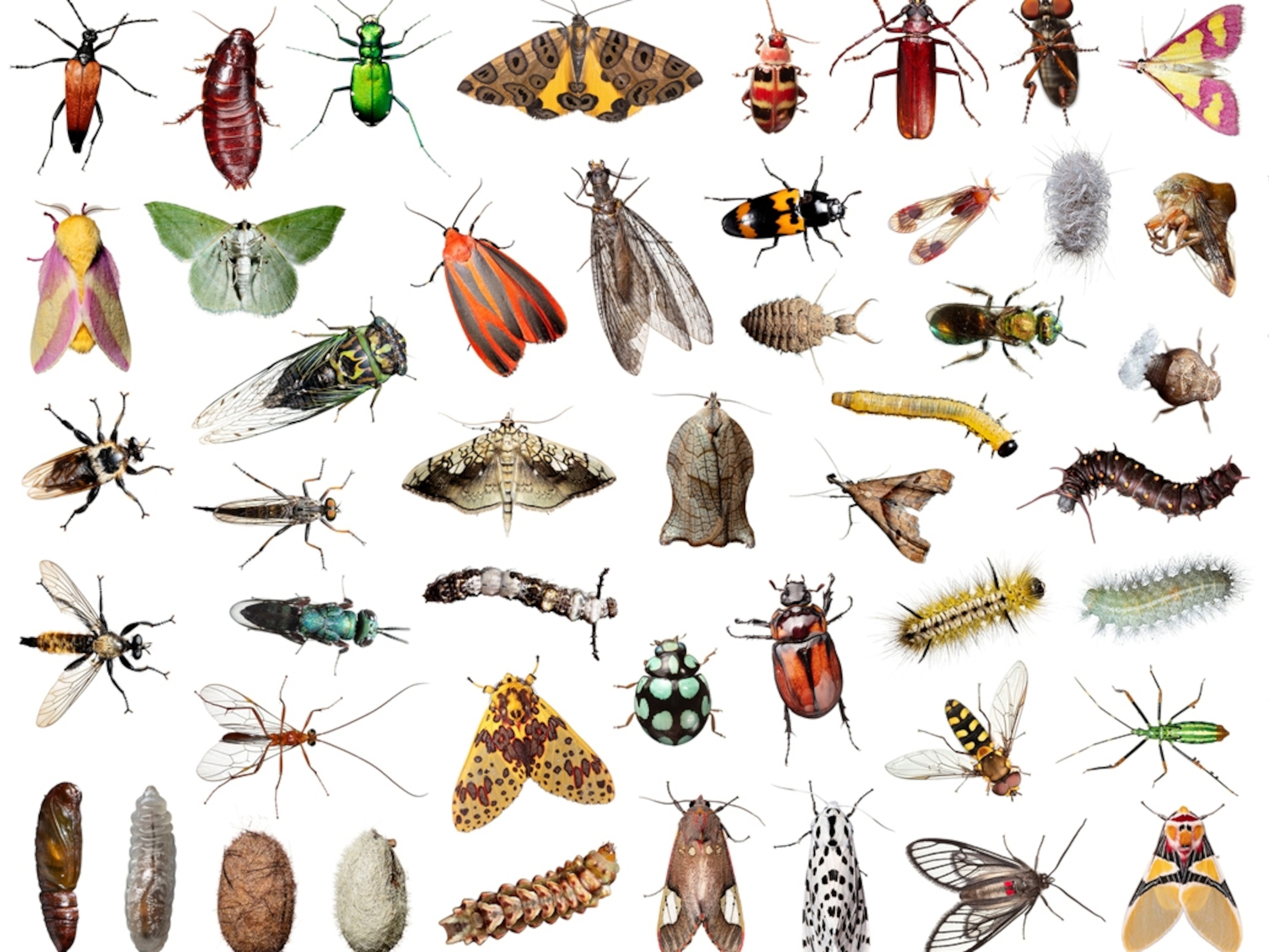

This finding, published in the scientific journal PLOS One, made headlines around the world. The Guardian warned of “ecological Armageddon,” the New York Times of “insect Armageddon.” The Frankfurter Allgemeine Zeitung declared that “we find ourselves in the middle of a nightmare.” According to the website Altmetric, which tracks how often published research is mentioned online, the study was the sixth most discussed scientific paper of 2017. The once obscure Krefeld Entomological Society was deluged with scientific and media requests, and it remains so to this day. “There simply is no end,” Sorg said, sighing.
Since the Krefeld paper, entomologists all over the world have been poring over records and collections. Some scientists argue there’s a bias in the published papers; they say a study that shows dramatic changes is more likely to be printed than one that doesn’t. Still, the results have been sobering. Researchers working in a protected forest in New Hampshire found that the number of beetles there had fallen by more than 80 percent since the mid-1970s, while the bugs’ diversity—the number of different kinds—had dropped by nearly 40 percent.
A study of butterflies in the Netherlands found their numbers had declined by almost 85 percent since the end of the 19th century, while a study of mayflies in the upper Midwestern U.S. found their populations had dropped by more than half just since 2012. In Germany a second team of researchers confirmed the gist of the Krefeld results. They found that from 2008 to 2017, the number of insect species in the country’s grasslands and forests—sampled repeatedly in hundreds of sites in three widely spaced protected areas—had fallen by more than 30 percent.
“It is frightening,” said one of the researchers, Wolfgang Weisser, a professor at the Technical University of Munich. But it “fits the picture presented in a growing number of studies.”
(Explore the five vital roles insects play in our ecosystem.)
People may delight in butterflies and detest mosquitoes, but most insects we simply ignore. This says way more about creatures with two legs than it does about creatures with six.
Insects are far and away the most diverse creatures on the planet, so much so that scientists are still struggling to figure out how many different kinds there are. About a million insect species have been named, but it’s generally agreed that many more—by recent estimates some four million more—have yet to be discovered. Just one family of parasitoid wasps, the Ichneumonidae, sometimes called Darwin wasps, contains something like 100,000 species, greater than the number of all known species of fish, reptiles, mammals, amphibians, and birds combined. (The mere existence of the Ichneumonidae, Charles Darwin once argued to a friend, was enough to disprove the biblical theory of creation, as no “beneficent and omnipotent God” would have designed such a ghoulish, murderous parasite.) Other insect families are similarly big; there are, for example, perhaps 60,000 species of Curculionidae, commonly known as weevils.
In keeping with their extraordinary variety, insects are found in virtually every type of terrestrial habitat, including the most extreme. Stone flies have been recorded in the Himalaya at elevations above 18,000 feet, and silverfish in caves 3,000 feet below Earth’s surface. The Yellowstone hot springs alkali fly lives at the edges of scalding pools, while the wingless midge Belgica antarctica survives the cold by coating its eggs in a kind of antifreeze gel. A fly known as the sleeping chironomid, native to semiarid regions in Africa, has larvae that shrink to desiccated flakes in very dry times, entering a kind of suspended animation from which they have been observed to recover after more than 15 years.
What accounts for the tremendous variety of insects? Many explanations have been offered, the simplest being that insects are old. Very old. They were among the earliest animals to colonize land, more than 400 million years ago—nearly 200 million years before the first dinosaurs appeared. Such an extended history has allowed insect diversity to build up over time.
But having the ability to occupy many different environmental niches probably also mattered. Insects are so small that a single tree can be home to hundreds of kinds, some boring into the bark, others tunneling into the leaves, still others feeding on the roots. This sort of “resource partitioning,” as ecologists call it, allows many species of insects to inhabit more or less the same space.
Then there’s the fact that insects, historically at least, have had low extinction rates. A few years ago researchers examined the fossil record of the largest suborder of beetles, Polyphaga, a group that includes scarabs, click beetles, and fireflies. They found that not a single family in the group had gone extinct in its entire evolutionary history, even during the mass extinction at the end of the Cretaceous period, 66 million years ago. The finding makes recent declines seem all the more ominous.

Every autumn thousands of researchers gather for the annual meeting of the Entomological Society of America. Last fall the meeting was held in St. Louis, and the best attended session was titled “Insect Decline in the Anthropocene.”
Speaker after speaker rose to present the doleful evidence. Sorg discussed the work of the Krefeld group, Forister the drop in butterflies in the Sierras. Toke Thomas Høye, a researcher at Denmark’s Aarhus University, chronicled a decline in the number of flies visiting flowers in northeast Greenland, and May Berenbaum, an entomologist at the University of Illinois, spoke about the “global pollinator crisis.”
David Wagner, an entomologist at the University of Connecticut, had organized the session. When it was his turn at the mic, he pointed to a “conundrum.” The speakers, he noted, had all pretty much agreed insects were in trouble, but when it came to a cause, there was no consensus. Some blamed climate change, others farming practices or other infringements on insect habitat. “It’s pretty phenomenal that we have so many scientists looking at this problem and yet are not exactly certain what the stressors are,” he observed.
A few weeks after the session I met Wagner at the American Museum of Natural History in New York. The museum holds one of the world’s most extensive insect collections—row after row of metal cabinets filled with millions of pinned specimens. More or less at random, Wagner unlocked a Bombus—or bumblebee—cabinet. In one drawer were Patagonian bumblebees, Bombus dahlbomii. Among the largest bees on the planet, they used to be common across much of Chile and Argentina. In recent years their populations have crashed.
Another drawer was filled with rusty patched bumblebees—Bombus affinis—which are distinguished by a reddish patch on their backs. Native to the Midwest and northeastern United States, they too used to be common, but their numbers have fallen so low that they’re now listed as an endangered species.
The More, the Merrier: Beetles and Weevils

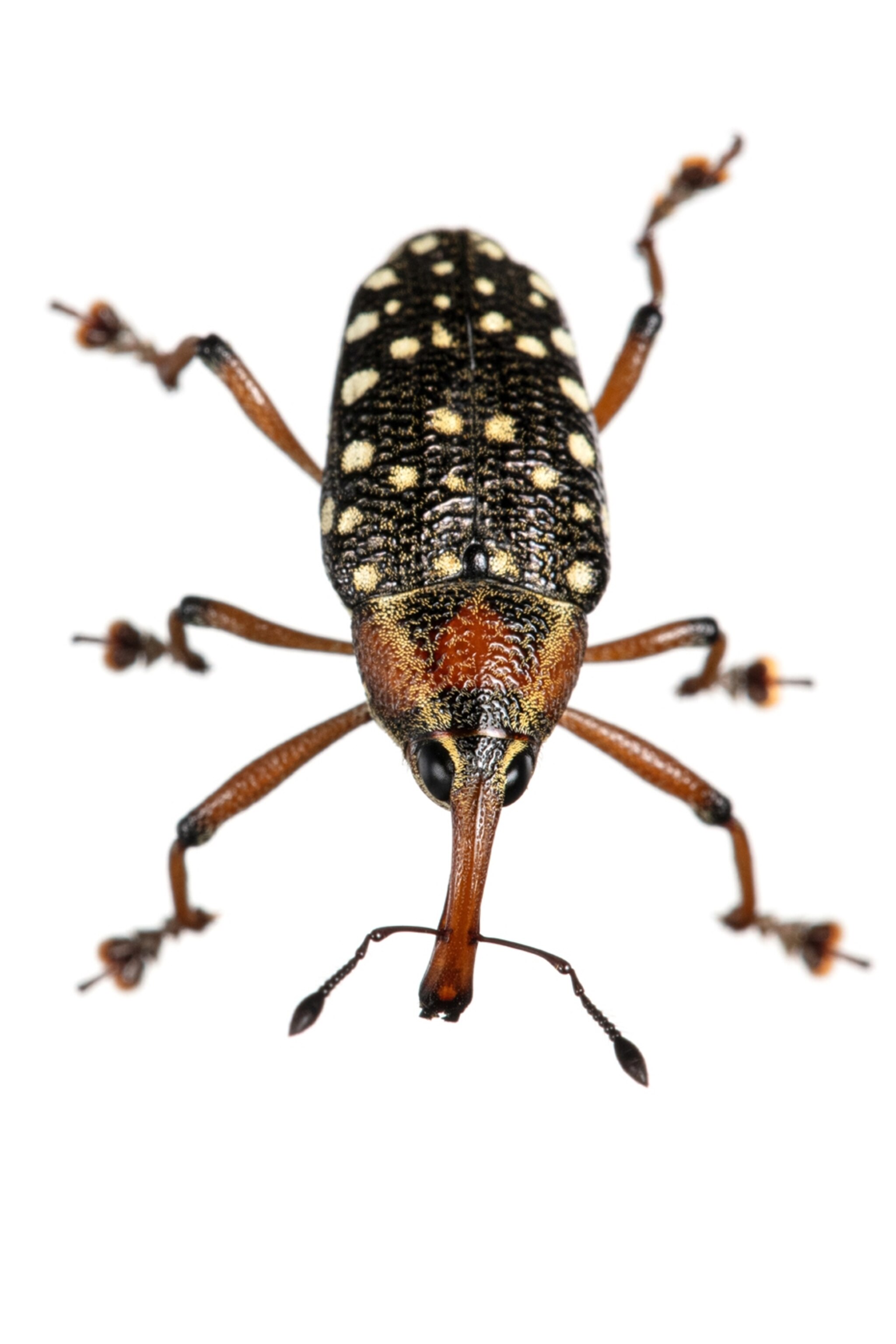

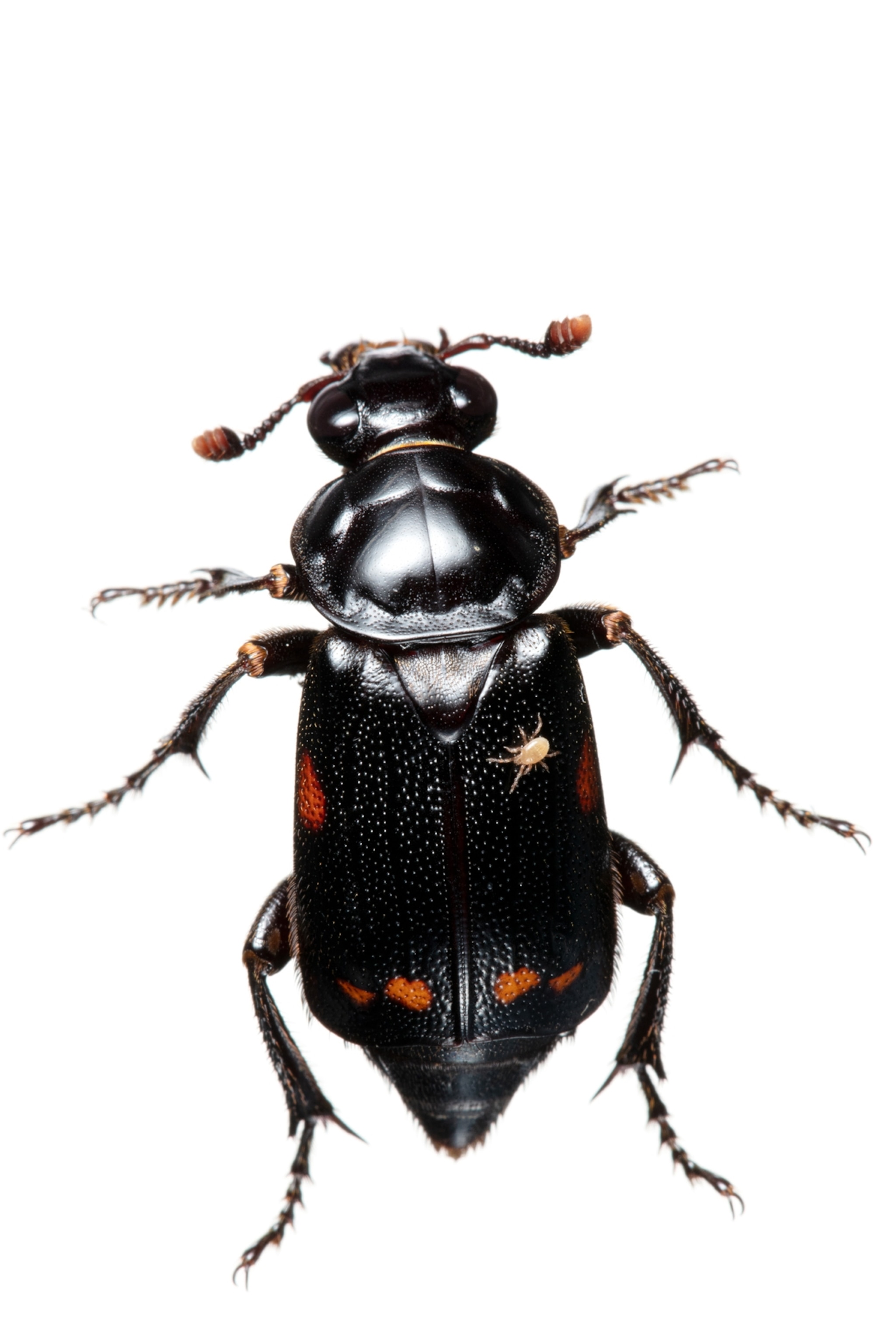
“You just can’t find them anymore,” Wagner said. He explained that there’s another species, the gypsy cuckoo bumblebee, that lives by invading the nests of other bumblebees, including the rusty patched, eating their larvae and replacing them with its own. “That bee has also been disappearing,” he said.
I asked Wagner what he thought was driving insect declines. On some level, he said, the answer was obvious: “We’d expect things to be declining with seven billion people on the planet.” In the process of feeding, clothing, housing, and transporting themselves, people are altering the planet in fundamental ways—mowing down forests, plowing up grasslands, planting monocultures, pouring pollutants into the air. Every one of these is a stressor for insects and other animals. Populations of just about all animal groups are dropping.
“We know we are in a biodiversity crisis,” Wagner said.
What is confounding is the rate of insect loss reported in recent studies. Results like those out of Krefeld suggest that insects are declining significantly faster than other animal groups. Why? Pesticides are one possibility; though aimed at “pest” species, the chemicals don’t discriminate between insects that damage crops and those that pollinate them. (Even protected areas in Germany may be affected by pesticides, since many of those areas abut agricultural land.) But in some places where steep declines have been reported—the White Mountains of New Hampshire, for example—pesticide use is minimal. Hence the conundrum.
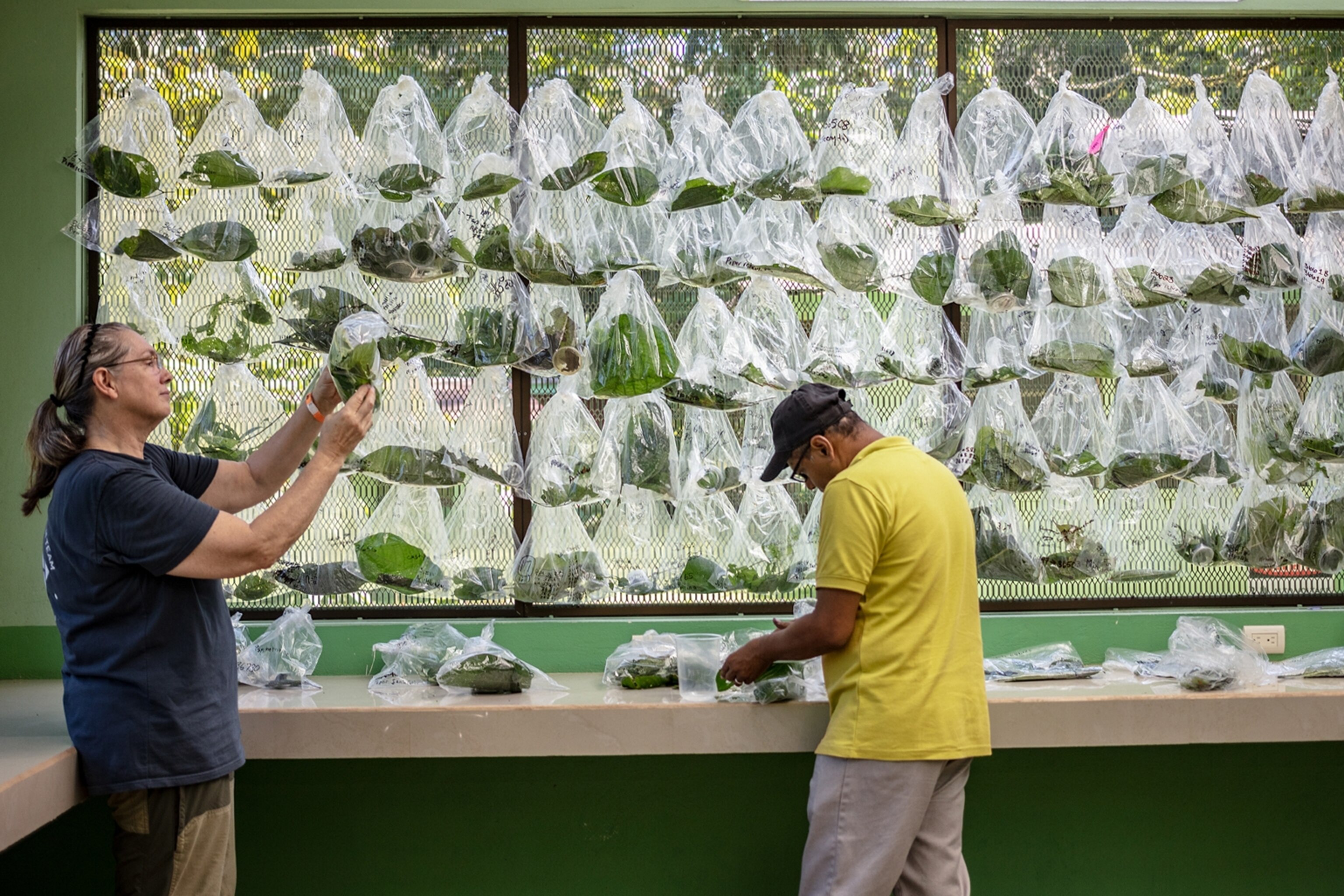
“The issue right now is to figure out to what degree insects are more imperiled than other species,” Wagner said. “It’s urgent.”
“For the first time,” he added, “I think people are really worried about ecosystem services and all the things insects do to sustain the planet.”
In their nearly infinite variety, insects perform myriad labors, many of them unsung. Roughly three-quarters of all flowering plants rely on insect pollinators—bees and bumblebees most familiarly, but also butterflies, wasps, and beetles. Most fruit crops, from apples to watermelons, need insect pollinators.
Insects are also critical seed dispersers. Many plants equip their seeds with little appendages, known as elaiosomes, that are packed with fats and other goodies. Ants carry off the seed, eat only the elaiosome, and leave the rest to sprout.
Insects, in turn, provide food for freshwater fish and just about every kind of land animal. Insectivorous reptiles include geckos, anoles, and skinks; tree shrews and anteaters are insectivorous mammals. Birds that subsist mainly on bugs include swallows, warblers, woodpeckers, and wrens.
Even birds that are omnivores as adults often rely on insects when they’re young. Carolina chickadees, for example, rear their chicks exclusively on caterpillars. (It takes more than 5,000 caterpillars to fledge a nestful.) A recent study of North American birds found that their numbers also have been in steep decline—down by almost a third since 1970. Species with insect-heavy diets have been among the most hard-hit.
Insects are also crucial decomposers that keep the wheel of life turning. By eating poop, dung beetles help return nutrients to the soil. Termites do the same by consuming wood. Without insects, dead organic matter—including human bodies—would begin to pile up. Under the right conditions, blowfly maggots can consume 60 percent of a human corpse within a week.
It’s hard to assign a dollar value to all this work, but back in 2006 a pair of entomologists tried. They looked at four categories of “insect services”—“dung burial, pest control, pollination, and wildlife nutrition”—and came up with a figure of $57 billion a year for the U.S. alone.
Caterpillars: Eat or Be Eaten




La Selva Research Station is just 35 miles north of Costa Rica’s capital city, San José, but getting to it entails a two-hour drive over a steep mountain pass with hairpin turns.
One of La Selva’s nightspots used to be a small pavilion equipped with a white sheet and a black light left on to attract insects. So many insects would collect on the sheet that visitors to the station would stay up until dawn to watch them. Over the past two decades, though, the display has become less spectacular, to the point where it’s no longer really a display at all. Two trips to the pavilion on steamy nights this past January yielded the following tally: three moths, one weevil, a shield bug, and some gnats.
“When I first came here, this really was a hangout point,” Lee Dyer, an ecologist from the University of Nevada, Reno, said of the pavilion. “Now you don’t ever see any insects—maybe one or two.”
Dyer has been working at La Selva since 1991. His research focuses on the interaction between insects and their host plants, and insects and each other. Many insects live off other insects. Most parasitic wasps, for example, lay their eggs in the bodies of caterpillars, using their hosts as a kind of living pantry: The wasp larvae gradually eat the caterpillars from the inside out. Other insects, known as hyperparasitoids, lay their eggs in or on the bodies of parasitoids. There are even insects that parasitize hyperparasitoids.
With the help of students and volunteers, Dyer has been collecting caterpillars at La Selva and rearing them to see what emerges—moths in some cases, parasitoids in others. Like the members of the Krefeld Entomological Society, he didn’t set out to find evidence of insect decline. But it found him. One of his graduate students, Danielle Salcido, recently sifted through the two decades’ worth of data. She found that since 1997, caterpillar diversity at La Selva has dropped by almost 40 percent. Parasitoid diversity has dropped by even more—around 55 percent.
Parasitoids help keep many crop-eating caterpillars in check, so if they’re declining, agricultural losses may increase. (Salcido found that a couple of groups of caterpillars that are prone to outbreaks were increasing, even as most caterpillars were declining.) The loss of interactions between caterpillars and parasitoids also means entire food chains may be unraveling, in many cases before humans have had a chance to discover them.

“I was an English major,” Dyer said. “And these kinds of interactions, these stories, are like poems.” When so many are lost, “it’s like burning down a library.”
Most long-term data about insects come from the temperate zone—Europe or the U.S. But something like 80 percent of all insect species live in the tropics, which is what makes Dyer and Salcido’s findings potentially so significant. Though La Selva is surrounded by agriculture, which brings problems like habitat fragmentation and pesticide use, Dyer believes one of the main drivers of the decline is climate change. In particular he points to the increase in extreme weather events, like floods. Many insect species “are really susceptible, in the tropics especially, to extreme weather conditions,” he said. “They’re just not adapted to big fluctuations.”
Dan Janzen and Winnie Hallwachs are tropical ecologists at the University of Pennsylvania. They spend part of the year in Philadelphia and part north of the city of Liberia, in western Costa Rica, in a house they share with whatever wildlife settles in, including whip scorpions and nectar bats. When a visitor arrived from La Selva, Hallwachs pointed out a three-inch-long cockroach under the sink. “I tell people, books are nothing but termite food,” Janzen said, gesturing toward a small mound of shredded paper in one of the bookcases.
The surrounding landscape is very different from La Selva—tropical dry forest and, up the mountain, cloud forest instead of lowland rainforest. But here too, Janzen and Hallwachs have seen a dramatic decline in insects. Hallwachs recalled that in the mid-1980s, when they got an early personal computer, the light from the screen at night attracted so many bugs they had to erect a tent in the house and work inside it.
“I’m now at a point where every insect that crosses my desk at night goes into a little plastic tube with alcohol,” Janzen said. He’d been back in Costa Rica for two weeks and had collected only nine insects.
Janzen and Hallwachs also attribute much of the decline to climate change. Janzen, who’s 81, said that when he first started coming to Costa Rica in 1963, the dry season lasted four months. “Today we have a six-month dry season, so all those things that had their lives organized around a four-month dry season are now hit with two extra months. They run out of food, they run out of cues, everything just falls apart.”
A Whole World of Variety




What can be done to reverse these ominous trends? On some level, of course, that depends on what’s driving them. If it’s primarily climate change, then it would seem that only global action to reduce emissions could really make a difference. If pesticides or habitat loss are the main culprits, then action on a regional or local scale could have a big impact.
In an effort to protect pollinators, the European Union has banned most neonicotinoid pesticides, which several studies have linked to insect and bird declines. Last fall the German government adopted an “action program for insect protection,” which calls for restoring insect habitat, banning the use of insecticides in certain areas, and phasing out glyphosate, a commonly used herbicide. (Glyphosate may be eliminating key plants that insects depend on, and research suggests it also could be disrupting their immune systems.) “We cannot do without insects,” the action plan noted.
Recently a group of more than 50 scientists from around the world proposed a “roadmap” for insect conservation. It recommended “taking aggressive steps to reduce greenhouse gas emissions,” preserving more natural areas as safe havens for insects, and imposing stricter controls on exotic species. (The collapse of the Patagonian bumblebee, in South America, and possibly of the rusty patched bumblebee, in North America, was caused by bees introduced from Europe.) The group also called for reducing the application of synthetic pesticides and fertilizers.

“There are a lot of things we could do, regardless of how this play ends, that would be good practices,” said Wagner, who was part of the group. “Anything to do with climate would be number one on my list. If we could roll back pesticide use for cosmetic purposes, like on our lawns, that’s a win-win for the planet.”
One of the few organizations in the world specifically devoted to invertebrate conservation is the Xerces Society, based in Portland, Oregon. (The society was named after the Xerces blue, a butterfly native to the San Francisco peninsula that went extinct in the 1940s because of development.) One day not long after I climbed Castle Peak, I went with the society’s director, Scott Black, to visit some of its collaborative projects in California’s Central Valley. As he drove, Black recalled one of his first loves, a Mustang he’d bought as a teenager in Nebraska in 1979. He constantly had to wash it because it was plastered with dead bugs. Now, he said, he rarely has to scrape dead insects off his car. This phenomenon has been so widely noted it’s become known as the “windshield effect.”
Mile after mile of precisely planted fields flew by. Black shook his head. It used to be that farms in the valley were rimmed with weedy patches where insects could take refuge; today, he said, they tend to be plowed from one roadway to the next. “What I see is a lack of habitat.”
Eventually we reached Bixler Ranch, in the town of Stockton. The 1,300-acre spread grows almonds and blueberries, and a few years ago its owners decided to work with Xerces to plant hedgerows and add back some of the native habitat that had been lost over a half century of increasingly intensive agriculture. One hedgerow had been planted in an old irrigation ditch and extended for more than half a mile. Taller shrubs like Woods’ rose and elderberry alternated with smaller ones like white sage and western vervain. It was a hot, dusty day toward the end of summer, and most of the plants were looking thirsty. Even so, they were buzzing with leaf-cutter bees and sweat bees. “We have lots of data that show if you do this, they will come,” Black said.
“Plants and insects are the fabric of this planet,” he went on. “We’re ripping it to shreds, and we need to knit it back together.”
Related Topics
You May Also Like
Go Further
Animals
- Octopuses have a lot of secrets. Can you guess 8 of them?
- Animals
- Feature
Octopuses have a lot of secrets. Can you guess 8 of them? - This biologist and her rescue dog help protect bears in the AndesThis biologist and her rescue dog help protect bears in the Andes
- An octopus invited this writer into her tank—and her secret worldAn octopus invited this writer into her tank—and her secret world
- Peace-loving bonobos are more aggressive than we thoughtPeace-loving bonobos are more aggressive than we thought
Environment
- Listen to 30 years of climate change transformed into haunting musicListen to 30 years of climate change transformed into haunting music
- This ancient society tried to stop El Niño—with child sacrificeThis ancient society tried to stop El Niño—with child sacrifice
- U.S. plans to clean its drinking water. What does that mean?U.S. plans to clean its drinking water. What does that mean?
- Food systems: supporting the triangle of food security, Video Story
- Paid Content
Food systems: supporting the triangle of food security - Will we ever solve the mystery of the Mima mounds?Will we ever solve the mystery of the Mima mounds?
History & Culture
- Strange clues in a Maya temple reveal a fiery political dramaStrange clues in a Maya temple reveal a fiery political drama
- How technology is revealing secrets in these ancient scrollsHow technology is revealing secrets in these ancient scrolls
- Pilgrimages aren’t just spiritual anymore. They’re a workout.Pilgrimages aren’t just spiritual anymore. They’re a workout.
- This ancient society tried to stop El Niño—with child sacrificeThis ancient society tried to stop El Niño—with child sacrifice
- This ancient cure was just revived in a lab. Does it work?This ancient cure was just revived in a lab. Does it work?
Science
- The unexpected health benefits of Ozempic and MounjaroThe unexpected health benefits of Ozempic and Mounjaro
- Do you have an inner monologue? Here’s what it reveals about you.Do you have an inner monologue? Here’s what it reveals about you.
- Jupiter’s volcanic moon Io has been erupting for billions of yearsJupiter’s volcanic moon Io has been erupting for billions of years
- This 80-foot-long sea monster was the killer whale of its timeThis 80-foot-long sea monster was the killer whale of its time
Travel
- This town is the Alps' first European Capital of CultureThis town is the Alps' first European Capital of Culture
- This royal city lies in the shadow of Kuala LumpurThis royal city lies in the shadow of Kuala Lumpur
- This author tells the story of crypto-trading Mongolian nomadsThis author tells the story of crypto-trading Mongolian nomads




